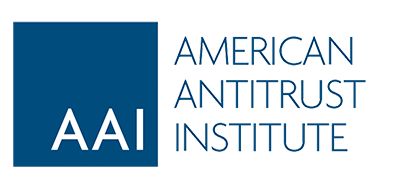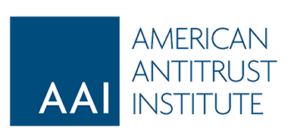On March 18, 2024, in Regeneron v. Novartis, the Second Circuit embraced arguments made in an AAI amicus brief and reversed a district court order dismissing a Walker Process monopolization claim under Section 2 of the Sherman Act.
Novartis sued rival Regeneron alleging infringement of a patent on the use of pre-filled syringes containing a category of ophthalmic drugs used to treat conditions associated with degenerative eye disease and blindness. Regeneron counterclaimed under Section 2 of the Sherman Act, alleging that Novartis committed knowing and deliberate fraud when it procured the patent and did so to monopolize the market for pre-filled syringes containing the ophthalmic drugs (“PFS market”). In Walker Process, the Supreme Court held that a plaintiff may maintain a Section 2 claim against a patentee who obtains an invalid patent by intentionally defrauding the Patent Office, provided the other basic elements of a Sherman Act claim are satisfied.
Prior to the launch of PFS products, the ophthalmic drugs at issue were stored in vials, and doctors administered treatment by manually loading the drugs from the vials into syringes. Regeneron alleged, among other things, that 80-90% of doctors have switched from using vials to pre-filled syringes, and that Novartis conceded in a sworn federal court filing that Regeneron’s launch of a PFS product caused the price of its own PFS product to “erode.” The district court dismissed Regeneron’s counterclaim because it thought a relevant market limited to syringes seemed implausible. The court held that a proposed relevant product market is suspect if the scope of the claimed market is identical to the scope of the patent rights on which a patent claim reads. It held that Regeneron’s proposed market was implausible because Regeneron did not explain why patients would not switch back to vials in the event of an increase in the price of pre-filled syringes.
AAI submitted an amicus brief urging the Second Circuit to reverse. The AAI brief argued that the district court fundamentally misunderstood and misapplied basic market definition principles and that the district court was wrong to view relevant markets that are coterminous with patent grants suspiciously. Market definition focuses on the realities of actual demand substitution, not the functional interchangeability of products; whether customers would be willing to substitute to alternatives in place of a patented product is a fact-driven empirical question not amenable to resolution on a motion to dismiss. Not only is the fact that a product may be differentiated by patented features not dispositive; it is not relevant. Neither the fact of a patent grant, nor its scope, can shed any light on customer switching behavior for purposes of defining markets.
The brief also explained that the district court’s special pleading rule governing patents that are coterminous with relevant markets would lead to absurd results because it would prevent plaintiffs from pleading a required element of a Walker Process claim. Walker Process plaintiffs are required to plead and prove that the fraudulently procured patent is itself the source of the defendant’s monopoly power. Whenever the scope of the claimed relevant market is coterminous with the scope of a patent grant, the district court’s rule would effectively require plaintiffs to allege a logical impossibility—that the defendant both derives its monopoly power from the patent and does not.
The Second Circuit accepted both of AAI’s arguments. Quoting from the same passage of the same case that AAI cited to explain the plaintiff’s pleading burden, the Court held that, “[a]t the motion-to-dismiss stage, a plaintiff’s proposed relevant market must ‘bear a rational relation to the methodology courts prescribe to define a market.’” It added, further to the AAI brief, that “this is a relatively permissive pleading standard” because “market definition is a deeply fact-intensive inquiry.”
The Court also sided with AAI on the relevance of functional interchangeability. The Court explained that “the applicable analysis is whether or not the products are economic substitutes, not whether they appear to be functionally similar,” and it specifically warned that “proposed markets are not to be rejected simply because a court believes the plaintiff is unintuitively separating products that might have real-world functional similarities into different relevant markets.” Rather, “identifying the scope of a relevant market requires resolving empirical questions that can be determined only after a factual inquiry into the commercial realities faced by consumers.”
In rejecting the district court’s special pleading rule for instances where a claimed relevant market is coterminous with the scope of a patent grant, the Court held that “[t]his reasoning was flawed.” Again citing to the same cases and quoting from the same passages cited and quoted in the AAI brief, the Court held that “[w]hether and to what extent a patent confers monopoly power is ‘a matter of proof’” because “a patent does not necessarily confer market power upon the patentee.”
The brief was written by AAI President Randy Stutz.
AAI Advisory Board Member Jack Kirkwood, joined by numerous other AAI Advisory Board members, also submitted an amicus brief on behalf of 46 professors of law, economics, business, and medicine urging reversal of the district court.


